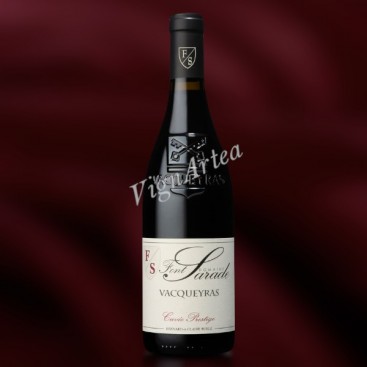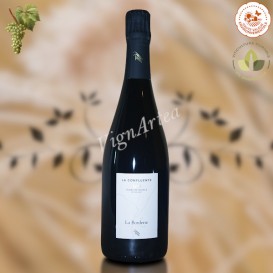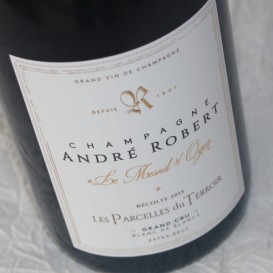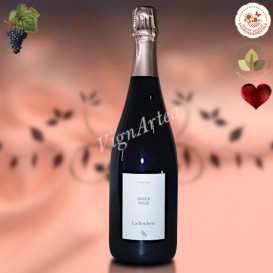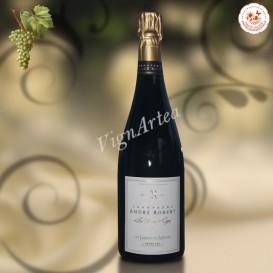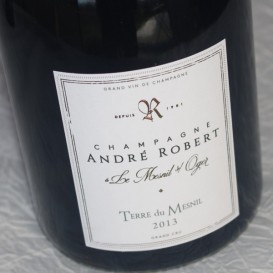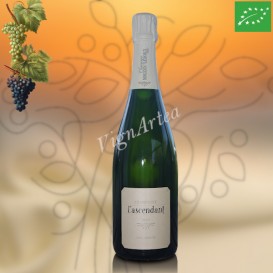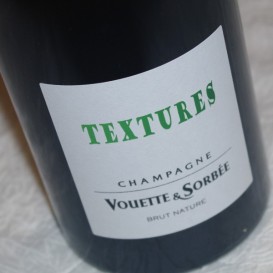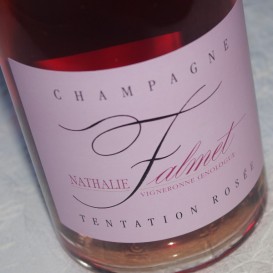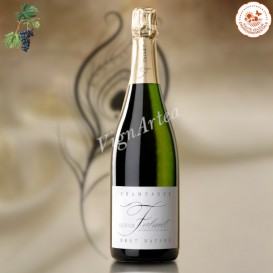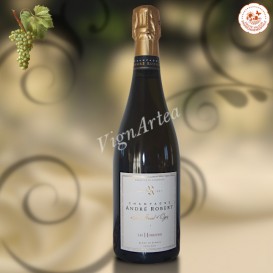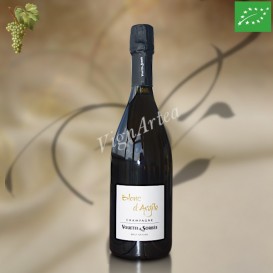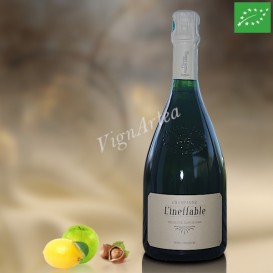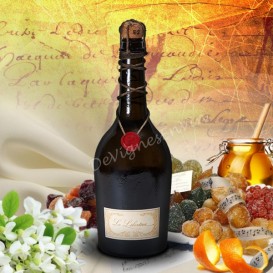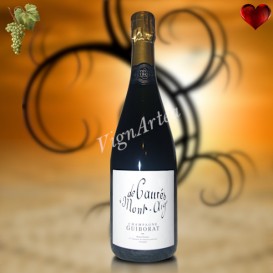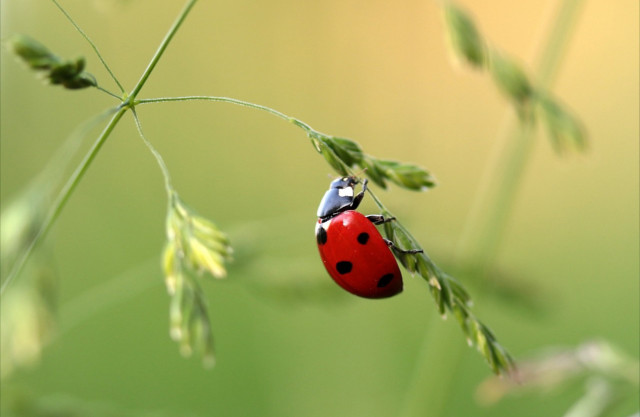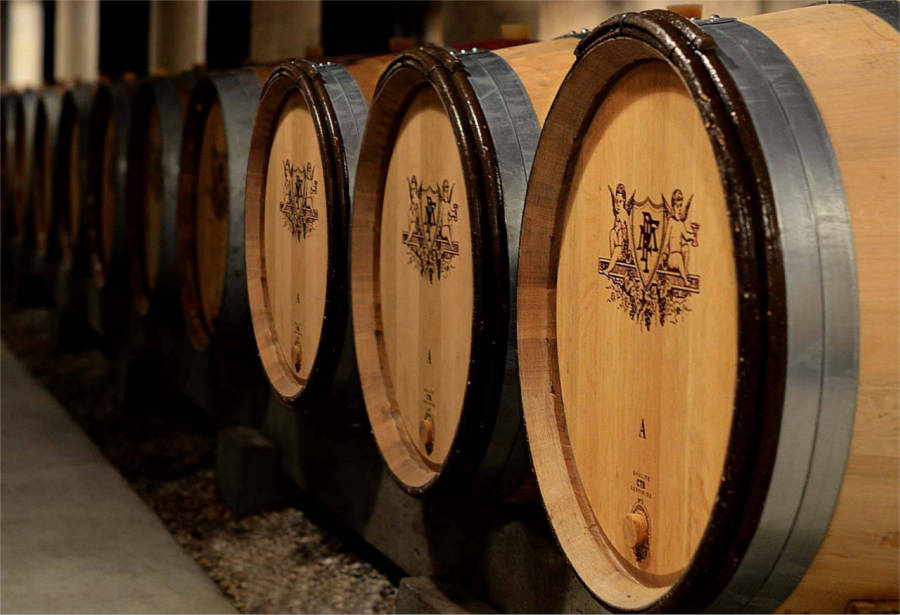VACQUEYRAS PRESTIGE 2020 (Domaine Font Sarade)
RHÔNE - AOP VACQUEYRAS - RED WINE
Grape varieties: Old Syrah - Grenaches
Native yeasts
Ageing in concrete vats for 8 months, then in oak barrels for 12-14 months
- Nose: Elegant and distinguished. Notes of crisp red & black fruits, sweet spices, cinnamon, with a hint of bay leaf and eucalyptus.
- Palate: silky and rich. Tannins of great finesse, full and lush. Finish on liquorice and rosemary.
- Tasting date: May 2023
- OUR OPINION: A magnificent wine, racy and complex, with scents of the garrigue. A gastronomic wine that is a favourite!
TERROIR
The grapes that make up PRESTIGE come from old vines of Syrah and vines of Grenache planted in the Bel Air district of Vacqueyras and on the plateau de La Ponche.
This part of the territory is composed of Miocene formations of the Helvetian (-16 to -11 Ma) and the Burdigalian (-23 to -16 Ma): both of them are very sensitive to erosion and are essentially composed of reddish sand with lenses consolidated in soft sandstone, which disintegrate to give sandy soils sometimes stony (sandstone). Limestone pebbles from the Dentelles de Montmirail cover the surface.
The Burdigalien outcrops on the slopes of the sector, offering a soil of quartz limestone, conglomerates or calcareous marl which rests on a very heterogeneous subsoil dating from the Oligocene (-33 to -23 Ma), presenting detrital littoral or lagoon facies, but which are only very rarely found in the designation.
In this sector, dominated by the Helvetian molasses, the water reserve is more important. The red wines produced here are finer but less structured, with an average ageing potential.
WINEGROWING & WINEMAKING
The old vines of Syrah and the vines of Grenache are grown according to the Sustainable Farming principles and the rows are grassed. Their yield is voluntarily limited to 35 hl/ha. The grape varieties are vinified separately.
The grapes are harvested by hand and destemmed before being put into vats for a long and low temperature maceration of 30 days. Some punching-down operations are carried out to break the cap of marc that forms at the top of the vat and mix it with the must. Daily pumping over, which consists of removing the juice from the vat's bottom and re-injecting it at the vat's top, allows for a gentle extraction of tannins, color, and aromas.
Fermentations are done without yeast addition.
Once the maceration phase is over, the must is pressed, free-run juice and press juice from each grape variety are blended and then the whole is transferred to concrete tanks for an initial 8-month maturation phase. It is then racked into French oak barrels of several wines for an additional ageing phase of 12 to 14 months.
When the ageing phase is over, the must is then lightly filtered and bottled.
| Country | Rhône Valley |
| Color | Red |
| Orange wines | No |
| Clay amphorae wines | No |
| Type | Dry |
| Vintage | 2020 |
| Capacity | 75 cl |
| Variety | Old Grenaches - old Mourvèdres. |
| Alcohol rate | 15 % |
| Quality Designation | Vacqueyras |
| Cellar Potential | 10 years |
| Service advise | 18°C. Open 1/2 hrs before the service. |
| Culture Methods | Sustainable cultivation method |
| Fining | No |
| Filtering | Yes |
| Comments | Native yeasts ♦ Low temperature fermentations ♦ Ageing in concrete vats for 8 months, then in oak barrels for 12 to 14 months. |
| Stopper | Natural cork |

